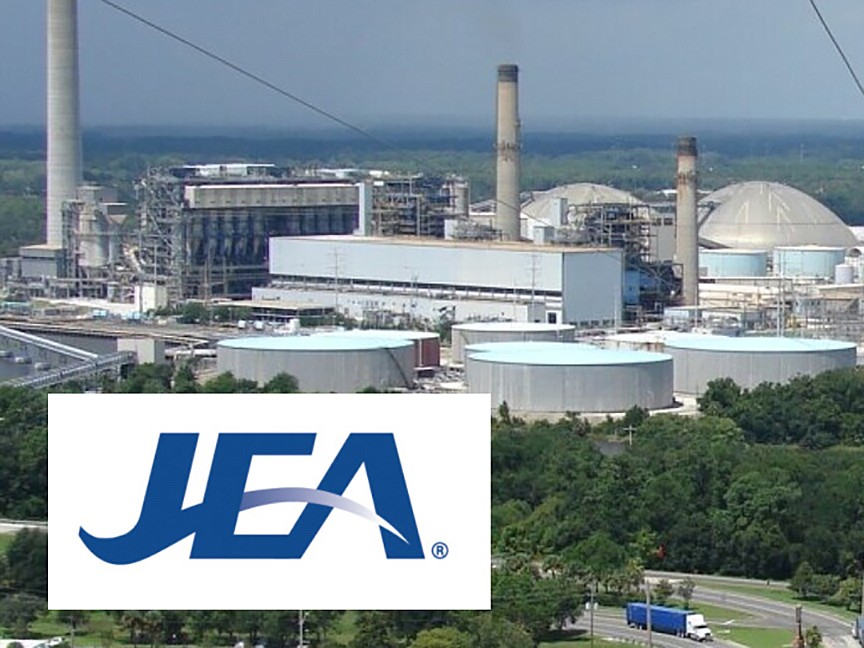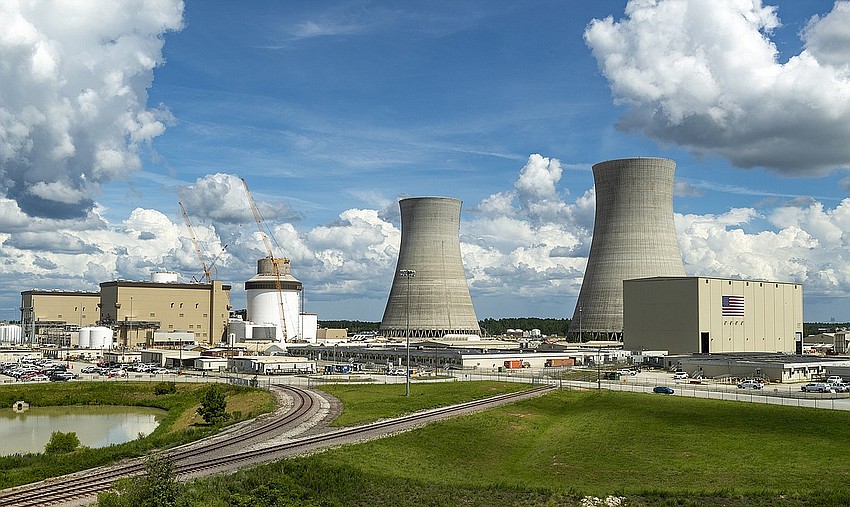
The JEA board approved the city-owned utility’s 2030 electric generation and clean energy goals that aim for 35% clean energy production and include a possible plan to replace a natural gas-powered unit at its Northside Generating Station.
The board voted 7-0 in favor of the energy efficiency and carbon reduction targets, part of JEA’s yearlong Electric Integrated Resource Plan process, during its April 25 board meeting.
In addition to the clean energy increase, the plan says by 2030 JEA will:
• Reduce carbon dioxide emissions by 80% from 2005 levels.
• Retire less-efficient power generation.
• Power JEA facilities with 100% clean energy.
• Offset vehicle and other electrification demand with energy efficiency programs.
JEA leadership and some board members called the goals “pragmatic,” while others on the board and community members said April 25 that the utility needs to have more aggressive clean energy targets, primarily through solar and battery storage adoption.
The utility started its planning process in early 2022, meeting with stakeholder groups from Northeast Florida’s business, development and environmental communities and government entities, to meet industry trends and consumer demand to retire fossil fuels that have climate impact and transition to clean, zero-carbon energy production.

The plan doesn’t go into detail on how much the clean energy plans will cost, but Stowe said they could impact JEA’s future electric rates.
“We have to keep our rates affordable while competing with the need to be renewable and sustainable,” CEO Jay Stowe told reporters after the meeting. “So we’re going balance those things and manage our rates the best we can.”
Although the plan calls for JEA to increase its solar energy portfolio through building solar farms and purchase power agreements, the 2030 goals include different scenarios and account for nuclear energy from the Georgia Plant Vogtle and possibly a new combined-cycle natural gas plant.
Stowe said a new natural gas plant is not definite, but would entail decommissioning the natural gas-burning Unit No. 3 at the utility’s Northside Generating Station.
Unit No. 3’s output would be replaced by a combination of purchase power agreements, solar energy and possibly a more efficient combined-cycle natural gas plant.
The Northside station on Heckscher Drive in Northeast Jacksonville has been operating for more than 50 years.
In an email to the Daily Record on March 28, JEA Vice President of Planning, Engineering & Construction Pedro Melendez said the utility is doing a feasibility study of two sites in JEA’s service territory for a more efficient natural gas plant.
“We are diversifying JEA’s energy portfolio. A new natural gas plant will support producing more energy with less gas and prepare us as we further reduce emissions,” Melendez said.
“JEA is seeking to use advanced technologies to help with the transition to cleaner energy.”
JEA has left itself room to drop the natural gas plan if clean energy technology advances quickly enough to not need the new plant.
Stowe said Northside’s Units No. 1 and 2, which burn coal and petroleum coke, would remain open, but by 2030 make up 3% to 5% of JEA’s energy production.
Solar and Vogtle
To reach its targets, JEA would need to increase its power production from solar and utility-grade battery storage by 1,300 megawatts within seven years.
Melendez told the board that the utility received 15 responses to a request for proposals to design and build four solar farms on sites owned by JEA in Duval County.
JEA Media Manager Karen McAllister said Dec. 16 an agreement would be for 300 megawatts.

This would make up for solar energy JEA expected to already have online before it canceled 25-year contracts in June 2022 with EDF Renewables North America Inc. subsidiaries for five 50-megawatt solar energy farms after the company claimed a force majeure.
A $106.6 million agreement to buy 150 megawatts of solar power produced by Florida Power & Light approved in January increased JEA’s renewable energy from 2% to 4% of its overall generational mix.
Stowe said JEA would still need 500 to 600 more megawatts from solar to reach its 2030 clear energy targets.
“We just didn’t do what we needed to do along the way to be at 4% (renewable energy) today. So to get from 4% o 35% clean energy is impactful,” Stowe said.
JEA officials said Unit 3 of the delayed nuclear Plant Vogtle expansion near Waynesboro, Georgia, which will produce carbon-free electricity, is projected to start providing energy for JEA in May or June.
Unit 4 could be in service in the fourth quarter of 2023 or first quarter of 2024. The 20-year agreement with Municipal Electric Authority of Georgia is for 206 megawatts.
‘Look these people in the eye’
Environmental groups and academics who were part of the resource plan stakeholder groups have praised the clean energy discussions in the year-long process. But they’re pressing JEA to do more.
UNF Associate Professor of Chemistry Joshua Melko urged the board April 25 to take advantage of tax and other incentives on solar energy projects in the federal Inflation Reduction Act.
He said integrated resource plans can also help a city with economic development and corporate recruitment efforts.
“You can also signal to prospective businesses today — businesses that want clean energy because it’s cheaper, because their employees want it (and) because their customers want it,” Melko said.
Board Chair Bobby Stein and Ricardo Morales III said the cost of building new transmission infrastructure, which can add up to 25% to the cost of a solar project, pushes 100% clean energy targets farther off into the future.
JEA intends to update the plan in three years as it monitors trends and costs to integrate more clean energy and the target could become more aggressive.
“I think we have been cautious like engineers should be in not over-promising and under-delivering because we don’t know what the future holds,” board member John Baker said.
“But I think it has to be a stated goal of JEA to become as carbon-free as possible and as practical. You don’t have to say zero carbon, but you cannot look these people in the eye and say our plan is to build a combined cycle plant,” he said.
Utility officials say JEA has reduced carbon emissions by 30% since 2005. Future plans will develop targets for 2040 and 2050, Stowe said.
Board member Marty Lanahan said he wants the board to “really dig into (solar adoption) in a more specific way” and “challenge us to put a stake in the ground for 2050.”
Baker said the board is listening to the public.
“We have got to be the leaders in making sure this community is provided with reliable, safe, cheap electricity,” Baker said. “But we also have to have an eye on the environment in a very, very serious way. And to not say that is almost to deny it.”